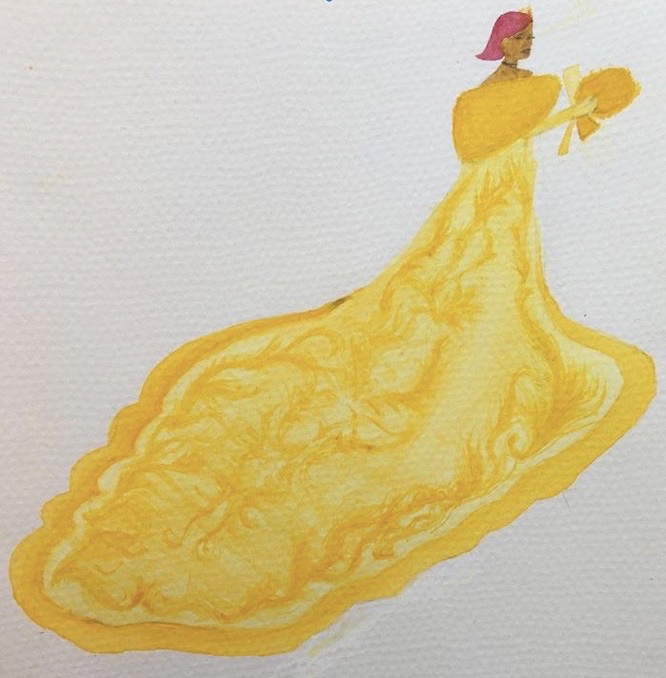[Written by Daniel Castro (he/him)]
[Image Credits: Jasmine Urquhart (she/her)]
The Met Gala, the annual fundraiser for the Costume Institute, is no stranger to causing a stir. Every year, we watch the biggest names in fashion, music and cinema walk the red carpet, donning designer pieces inspired by the theme of the year. This is a chance for designers and fashion houses to showcase their work in line with the subject matter of the Costume Institute’s annual fashion exhibit at the Metropolitan Museum of Art. In 2018, the theme was “Heavenly Bodies: Fashion and the Catholic Imagination”, a celebration of the impact that Catholic aesthetics has had on the world of fashion. The corresponding exhibit is the most visited exhibition in the museum’s 150-year history, having amassed over 1.6 million visitors over a five-month period. So why did the exhibition theme that year cause such a controversy?
It’s no surprise that a theme inspired by religious identity would turn some heads. Anna Wintour (the chairwoman of the Gala) and the co-chairs made every effort to remain respectful of the religion at the heart of the theme, travelling to the Vatican to request permission and even acquiring 40 artefacts from the Sistine Chapel Sacristy for the exhibition as a gesture of approval. For some, though, this wasn’t enough. There was unrest on social media at the use of Catholic imagery as “costumes” by the many celebrities who took to the red carpet, with some likening it to cultural appropriation. In my opinion, this not only suggests a misunderstanding of what cultural appropriation is, but also of the nature of the Met Gala.
The concept of cultural appropriation hinges around power imbalances. Catholicism can’t truly be appropriated when, despite the diversity of Catholics around the globe, its origins and leadership rest firmly within a white, European sphere. The reason that cultural appropriation is such a harmful force is because it enables the erasure of marginalised groups by dominant groups, and Catholicism is not a marginalised entity. To “appropriate” is to take without permission, and it doesn’t stand to reason that Catholicism can be appropriated when it has such a deep history of forced conversion by way of colonisation and violence. To put it simply, I don’t think that Catholicism can be appropriated when it is not a marginalised religion and its influence is not erased.
Since cultural appropriation is intrinsically linked to the erasure of culture, it’s difficult to accuse the Met Gala of being appropriative by nature as, at its core, it intends to acknowledge and celebrate the chosen theme. The exhibitions the Met Gala has launched have been visited by millions of people. This is why the theme of 2015 “China: Through the Looking Glass” has a complicated relationship with cultural appropriation. Unlike “Heavenly Bodies”, the theme of “China” attempted to celebrate a group that is genuinely marginalised in the Western world. Its attempt to acknowledge the impact of Chinese aesthetics on Western fashion was noble, but execution is everything when it comes to accurate cultural representation, so the lack of Chinese designers being represented on the red carpet that year naturally caused some discontent. One of the few guests to wear a Chinese designer was Rihanna, clothed by Guo Pei, a Chinese national from Beijing. Dressed in a 25kg yellow empress cape with a 16ft train, Rihanna made headlines for the viral influence that her dress created, shining a light on Guo Pei’s work and artistry. Rihanna’s dress that year became almost synonymous with the Met Gala, it is now an emblematic image of what the event has to offer in terms of innovative and forward-thinking fashion.
When it comes to celebrating someone else’s culture, Rihanna took the right approach. You work with people who have lived or are living that particular experience and bring attention to their voices and artistic expression, as to not inadvertently silence them. Art has always been a medium known to cause controversy, and this isn’t necessarily a bad thing, because it’s important to start conversations surrounding important topics. What I’m curious to see now however, is if the Met Gala will learn from its mistakes, or if it will continue to turn a blind eye. Anna Wintour, what’s your move?


beautiful image!